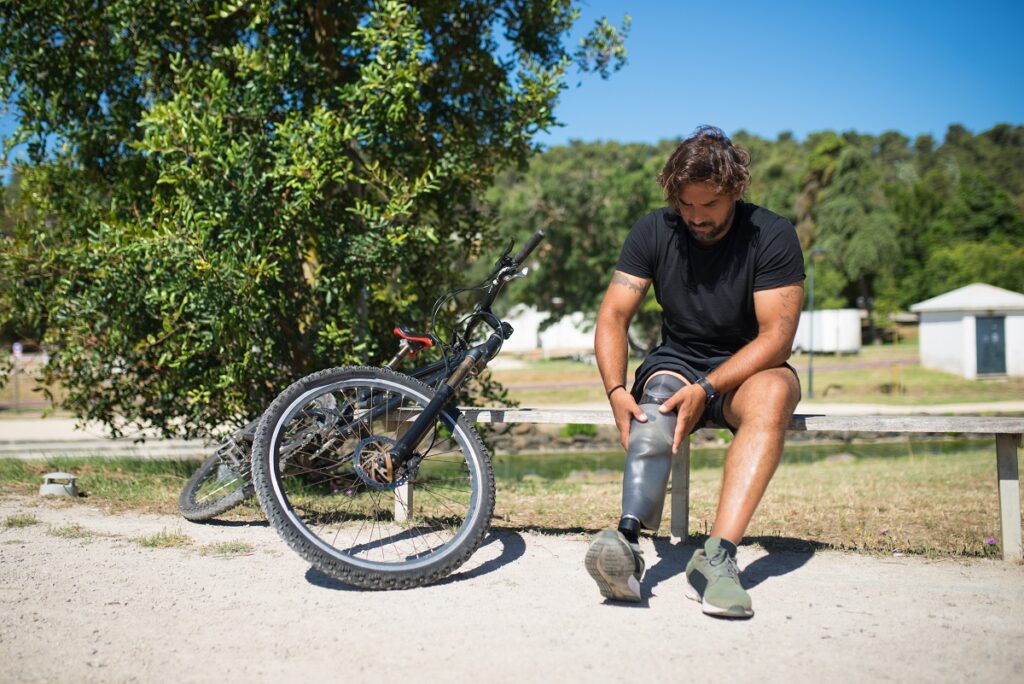Introduction
Define the health topic
Spinal cord injuries (SCIs) resulting from bicycle accidents represent a significant and often devastating medical condition. These injuries can lead to permanent changes in strength, sensation, and other bodily functions below the site of the injury, profoundly affecting the lives of those involved.
Explain its relevance and importance
Bicycling is a popular mode of transportation and recreational activity globally. However, the increasing number of cyclists has also led to a rise in bicycle-related accidents. Understanding the impact of SCIs from these accidents is crucial for developing effective prevention strategies, improving treatment options, and providing support for affected individuals.
Types and Categories
Complete Spinal Cord Injury
Complete SCIs result in a total loss of motor and sensory function below the level of the injury. This type can lead to paraplegia or quadriplegia, depending on the location of the injury on the spinal cord.
Incomplete Spinal Cord Injury
Incomplete SCIs involve partial loss of sensory and motor function below the injury site. These injuries vary widely in their effects and potential for recovery, depending on the severity and location of the injury.
Tetraplegia (Quadriplegia)
Tetraplegia, also known as quadriplegia, affects all four limbs and the torso, typically resulting from injuries to the cervical (neck) region of the spinal cord.
Paraplegia
Paraplegia affects the lower half of the body, including the legs and sometimes the lower torso, resulting from injuries to the thoracic, lumbar, or sacral regions of the spinal cord.
Symptoms and Signs
Loss of Movement
One of the most immediate and noticeable symptoms of an SCI is the loss of movement, which can be partial or complete, depending on the severity and location of the injury.
Loss of Sensation
SCIs often result in a loss of sensation, including the inability to feel touch, temperature, and pain below the level of the injury.
Exaggerated Reflex Activities
Spasticity, or exaggerated reflex activities, is a common symptom where muscles contract uncontrollably, leading to stiffness and spasms.
Pain or Intense Stinging Sensations
Many individuals with SCIs experience chronic pain or intense stinging sensations in areas that still have some nerve function.
Breathing Difficulties
Injuries high on the spinal cord, especially in the cervical region, can impair breathing and necessitate mechanical ventilation support.
Causes and Risk Factors
Bicycle Accidents
High-impact collisions, falls, and other incidents involving bicycles can lead to severe SCIs. Understanding the mechanics of these accidents is crucial for prevention.
Lack of Protective Gear
Not wearing helmets or other protective gear significantly increases the risk of SCIs in bicycle accidents.
Reckless Riding
Speeding, performing stunts, and riding under the influence of alcohol or drugs are major risk factors for severe bicycle-related injuries.
Poor Road Conditions
Potholes, debris, and poorly maintained roads can contribute to accidents leading to SCIs.
Diagnosis and Tests
Neurological Examination
A comprehensive neurological examination assesses motor and sensory function to determine the extent and location of the injury.
Imaging Tests
MRI
Magnetic resonance imaging (MRI) provides detailed images of the spinal cord, identifying areas of compression, inflammation, or other damage.
CT Scan
Computed tomography (CT) scans offer cross-sectional images of the spine, helping to pinpoint the exact location of fractures or other injuries.
X-Rays
X-rays are used to identify fractures or dislocations in the spine that may have caused the SCI.
Electromyography (EMG)
EMG tests measure the electrical activity of muscles and can help determine the level of nerve function remaining after an SCI.
Treatment Options
Immediate Medical Care
Immobilization
Ensuring that the spine is immobilized immediately after an injury can prevent further damage.
Surgery
Surgical interventions may be necessary to stabilize the spine, remove bone fragments, or decompress the spinal cord.
Rehabilitation
Physical Therapy
Physical therapy focuses on strengthening muscles, improving mobility, and teaching adaptive techniques for daily activities.
Occupational Therapy
Occupational therapy helps individuals regain independence by teaching them how to perform everyday tasks in new ways.
Speech and Respiratory Therapy
These therapies are essential for individuals with injuries that affect breathing or speech, helping to improve their quality of life.
Medications
Steroids
High-dose steroids may be administered immediately after an SCI to reduce inflammation and improve outcomes.
Pain Management
A combination of medications, including analgesics and muscle relaxants, can help manage chronic pain and spasticity.
Preventive Measures
Wearing Helmets
Helmets are crucial in protecting the head and neck, significantly reducing the risk of SCIs in bicycle accidents.
Following Traffic Rules
Adhering to traffic laws, using bike lanes, and signaling turns can help prevent accidents.
Maintaining Bicycles
Regular maintenance ensures that bicycles are in good working condition, reducing the likelihood of accidents due to mechanical failure.
Using Reflective Gear
Reflective clothing and bike lights increase visibility, making cyclists more noticeable to drivers, especially at night.
Personal Stories or Case Studies
Case Study 1: A Cyclist’s Recovery Journey
The Accident
Detailing the circumstances of a severe bicycle accident and the immediate aftermath.
Rehabilitation Process
Exploring the physical and emotional journey through rehabilitation.
Long-Term Impact
Discussing the ongoing challenges and adaptations required for living with an SCI.
Case Study 2: Overcoming Obstacles
Initial Diagnosis
The initial shock and adjustments following an SCI diagnosis.
Support Systems
The role of family, friends, and community in the recovery process.
Achieving Milestones
Celebrating small victories and significant achievements during recovery.
Expert Insights
Dr. John Smith, Neurologist
On the Importance of Early Intervention
“The first hours after a spinal cord injury are critical. Immediate medical care can significantly affect long-term outcomes.”
Dr. Emily Johnson, Physical Therapist
On Rehabilitation Strategies
“Rehabilitation is not just about physical recovery; it’s about helping individuals regain independence and improve their quality of life.”
Dr. Robert Brown, Orthopedic Surgeon
On Surgical Advances
“Recent advances in spinal surgery have improved our ability to stabilize injuries and promote better recovery outcomes.”
Conclusion
Summary of Key Points
Understanding the lasting impact of spinal cord injuries from bicycle accidents involves recognizing the types of injuries, their symptoms, causes, diagnostic methods, treatment options, and preventive measures. Personal stories highlight the real-life implications, while expert insights provide valuable perspectives on treatment and recovery.
Read Also:How to Identify Warts on Your Skin






